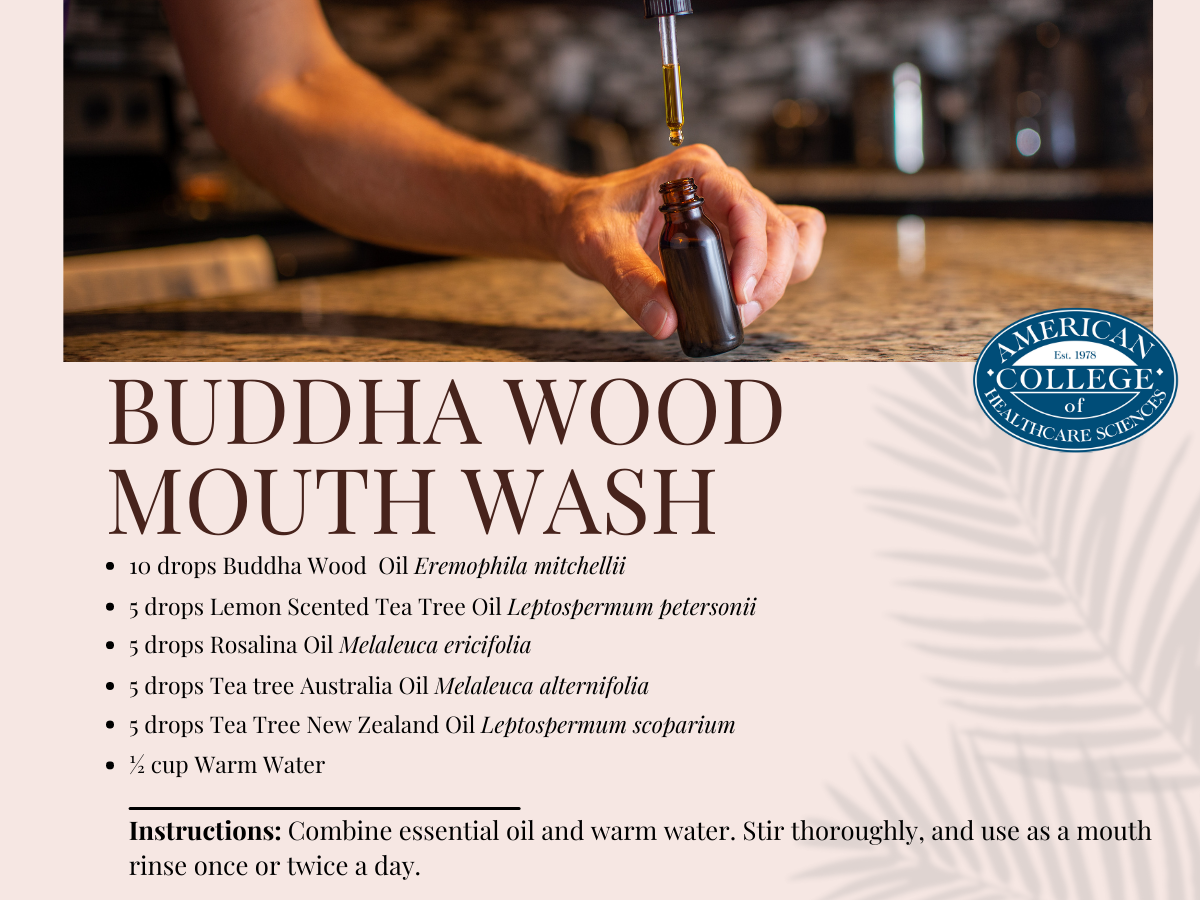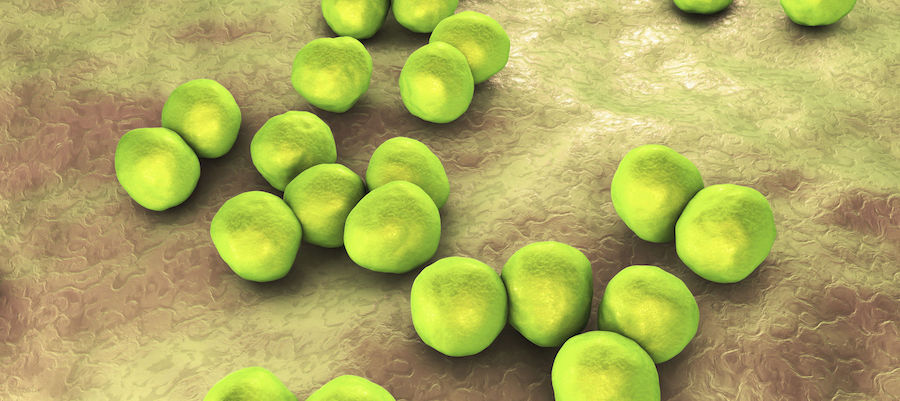History of Buddha Wood
Imagine a young backpacker lying flat on her back with only a layer of sand-like crushed limestone between her and a smoldering bed of Buddha wood embers. It’s the deserted depths of the Australian Nullarbor desert and the dark night is bitterly cold. The bed of embers was prepared earlier by an indigenous Australian who took pity on the lost backpackers' plight. What she did not realize was the warmth was from Buddha Wood embers, a traditional method to reduce pain via the smoke (or vapor) as well as to provide warmth.
The Latin name Eremophila from Greek, "eremos" meaning "desert" and "phileo" meaning to love, ("desert loving"), gives us a clue where this endemic Scrophulariaceae genus likes to lay down its roots. The species was first formally described in 1848 by the botanist George Bentham, and the species name (mitchellii) honors the explorer Sir Thomas Livingstone Mitchell (1792–1855), a translator, explorer and botanist who made three trips into the interior of Australia.[1]
Indigenous Australians were savvy in knowing how to use E. mitchellii for the treatment of rheumatism and even as an antibacterial.[2] The backpackers' experience was a unique way to experience the traditional method of administration. Buddha wood twigs and wood were gathered and burned, and then the hot embers were spread evenly on the ground, and covered with a layer of sand. The depth of the sand method regulated the temperature. Lying flat on the hotbed of Buddha wood embers was said to reduce pain.[3] The use of E. mitchellii as a traditional antibacterial agent is known, and the aromatic timbers were used as insect-resistant fence posts and were once considered to be a suitable alternative to Australian sandalwood (Santalum spp.).[4]
Plant Details
This aromatic wood, with the botanical name of Eremophila mitchellii, provides a powerful essential oil distilled from the wood of the Buddha wood tree, which is native to Australia. This dark-amber-colored essential oil has a woody, earthy scent, with notes of smokiness, making it a popular choice for aromatherapy and perfumery. Eremophila mitchellii actually produces a fragrant essential oil from not only wood, but the leaves, and roots. Buddha wood is such a common wild plant in Australia that it is regarded by some as a weed. Given this abundant status, it is reassuring that Buddha wood essential oil is distilled from sustainably wild-harvested wood. The wood, root and leaf oil all have a different aromatic and unique chemical profile. The leaf oil is green-black in color so easy to distinguish from the wood oil.
Buddha Wood Essential Oil
One of the main aromatic constituents of Buddha wood essential oil that make it even more unique is eremophilones. For the chemistry-minded, these are a class of rare, biologically-active bicyclic sesquiterpenes.[5] Equally unique is that eremophilones have been found to be dominant in only three species: E. mitchellii, E. scoparia and E. rotundifolia.[6] Other unusual aromatic constituents identified Buddha wood essential oil were santalcamphor, and small quantities of hydroxy eremophilone.
While there are very few studies in the current literature that confirm the medicinal uses of E. mitchellii, there is one study from 2005 that demonstrated the in vitro antimicrobial activity of undiluted Buddha wood oil confirming the traditional use of using it as an antimicrobial. This study confirmed Buddha wood essential oil had a powerful impact on the fungus Candida albicans and four different bacteria.[7] The bacteria inhibited were Escherichia coli (Gram-negative), Staphylococcus aureus (Gram-positive), Salmonella typhimurium (Gram-negative), and Alcaligenes faecalis (Gram-negative).
Most notable was the antibacterial activity of E. mitchelli at a 1% dilution against S. typhimurium.[8] Salmonella typhimurium infection in humans is a major cause of gastroenteritis and can also cause a life-threatening disease known as typhoid fever. According to the WHO, an estimated 11–20 million people get sick and between 128 000 and 161 000 people die from typhoid every year.[9]
What is Gram-positive and Gram-negative:
You may wonder why we need to know if bacteria are classified as Gram-positive or Gram-negative. And what does it even mean? Resistance to antibiotics is a frightening reality, and many different types of bacteria, both Gram-positive and Gram-negative strains, are developing resistance to antibiotics. Essential oils may provide a supportive role, but it is not a “one size fits all. The key to understanding the potential of an essential oil's supportive role in this fight is to understand the type of cell wall of the bacteria.
The terms Gram-positive and Gram-negative for bacteria refer to a method developed to distinguish between types of bacterial cells called Gram staining. It was developed in the 1800s as a quick and simple way to differentiate between Gram-positive and Gram-negative bacteria. Gram-positive stains are purple and Gram-negative stains are red. Staining helps to classify microorganisms based on the structural differences of their cell walls. The key to defining these differences is in understanding the protective membrane, or outer covering, surrounding these bacterial organisms.
Gram-negative bacteria have a thin cell wall that is surrounded by an outer lipopolysaccharide membrane,[10] which is nearly "bulletproof" and difficult to penetrate. Picture a bulletproof vest or a thin chain mail shirt worn by ancient soldiers as examples. Because of this virtually "bulletproof" membrane, they are often resistant to antibiotics and other antibacterial interventions. Examples of Gram-negative bacteria, all multidrug-resistant, include cholera Vibrio cholerae, gonorrhea Neisseria gonorrhoeae, and Escherichia coli.
By comparison, Gram-positive bacteria have a much thicker cell wall, but they lack an outer lipopolysaccharide membrane.[11] Picture a thick wooden fence surrounding a yard or a thick dry-walled partition inside a house. The cell wall of Gram-positive bacteria can be as much as 20-fold thicker than the cell wall of Gram-negative bacteria. Gram-positive bacteria have a greater volume of peptidoglycan (a polymer of amino acids and sugars that create the cell wall of all bacteria), which is what makes the thick outer covering. This dense outer covering, or membrane, is capable of absorbing much foreign material, thus making it more penetrable than Gram-negative. Some examples of Gram-positive bacteria include Streptococcus, Staphylococcus, and Clostridium botulinum (botulism toxin). Gram-positive microbes are still challenging to overcome. Methicillin-resistant Staphylococcus aureus (MRSA) is an important example of a Gram-positive bacteria, characterized by its resistance to all antimicrobials, including penicillin. Learn more about Gram-positive and Gram-negative in our blog, Gram-Positive vs. Gram-Negative Bacteria.
The use of protective coverings (i.e. membranes and cell walls), whether Gram-negative or Gram-positive, is not the only mechanism microbes use to make them very difficult to eradicate, and they are developing additional mechanisms at an alarming rate. Like a scene from a science fiction movie, microbes are now sharing DNA via horizontal gene transfer. Horizontal gene transfer means N. gonorrhoeae can now share the DNA that provides a microbe with a mechanism called an efflux pump which pumps antibiotics out of the cell, with other microbes. This is a war, "the revenge of the microbes", and a multi-targeted front line of defense needs diversity provided by essential oils, antibiotics, and bacteriophages all delivered by nanoemulsion and encapsulation. The silver bullet era of a single course of antibiotics that will cure all is over.[12] Buddha wood essential oil may have a role to play.
How to Use Buddha Wood Oil

Buddha Wood Foot Soak Recipe
General external use
- 1-3 drops Buddha Wood Oil Eremophila mitchellii
- 10 ml (1/3 oz) Base Oil of your choosing
Instructions: Blend 1 to 3 drops with a base oil to achieve a safe dilution ratio for a whole-body topical application. Add the entire diluted mixture to a bowl of boiled but cooled water (for an antifungal foot soak). Give it a good swish to mix.
Safe Usage Recommendation Tip: To achieve a safe dilution ratio for a whole-body topical application, Buddha Wood oil can be used at 1- 2%.

Buddha Wood Mouthwash Recipe
- 10 drops Buddha Wood Eremophila mitchellii
- 5 drops Lemon Scented Tea Tree oil Leptospermum petersonii
- 5 drops Rosalina oil Melaleuca ericifolia
- 5 drops Tea tree Australia Melaleuca alternifolia
- 5 drops Tea tree New Zealand Leptospermum scoparium
- ½ cup Warm Water
Instructions: Combine essential oil and warm water. Stir thoroughly, and use as a mouth rinse once or twice a day.
Buddha Wood Versatility
Buddha wood essential oil is a versatile and powerful essential oil that is worth incorporating into your daily routine. Just like the backpacker who had a unique experience, be adventurous and try this new and unique oil for yourself. I would love to hear from you in the comments below.
Safety Guidelines Regarding the Use of Buddha Wood
Before using any essential oil, always check for safety precautions and any contraindications. There is a lack of safety information on Buddha wood oil, so it is always advisable to conduct a skin patch test. Also, due to the lack of safety information, Buddha wood oil should not be used during pregnancy or lactation.
[1] Chinnock, R.J. (Bob) (2007). Eremophila and allied genera: a monograph of the plant family Myoporaceae (1st ed.). Dural, NSW: Rosenberg. pp. 218–220.
[2] Low, T., 1990. Bush Medicine: A Pharmacopoeia of Natural Remedies. Angus and
Robertson, North Ryde, NSW Australia
[3] Williams, C. J. (2013). Medicinal plants in Australia Volume 4: An Antipodean Apothecary. Sydney, AU: Rosenberg Publishing
[4] Sadgrove NJ, Padilla-González GF, Green A, Langat MK, Mas-Claret E, Lyddiard D, Klepp J, Legendre SVA, Greatrex BW, Jones GL, Ramli IM, Leuner O, Fernandez-Cusimamani E. The Diversity of Volatile Compounds in Australia's Semi-Desert Genus Eremophila(Scrophulariaceae). Plants (Basel). 2021 Apr 16;10(4):785. doi: 10.3390/plants10040785. PMID: 33923613; PMCID: PMC8073941.
[5] Beattie, D., Karren, G., Waterman, P. Forster, I., Paul, R., Thompson, D. R., & Leach, D. N. (2011). Chemical composition and cytotoxicity of oils and eremophilanes derived from various parts of Eremophila mitchellii benth (myoporaceae). Phytochemistry, 72(4-5), 400-408. doi: https://doi.org/10.1016/j.phytochem.2010.12.011
[6] Singab AN, Youssef FS, Ashour ML, Wink M. The genus Eremophila (Scrophulariaceae): an ethnobotanical, biological and phytochemical review. J Pharm Pharmacol. 2013 Sep;65(9):1239-79. doi: 10.1111/jphp.12092. Epub 2013 Jun 30. PMID: 23927466.
[7] Wilkinson, J.M., Cavanagh, H.M.A., 2005. Antibacterial activity of essential oils from
Australian native plants. Phytother. Res. 19, 643–646.
[8] Ibid
[9] World Health Organization (WHO) Typhoid Fact Sheet. https://www.who.int/news-room/fact-sheets/detail/typhoid
[10] Silhavy, T. J., Kahne, D., & Walker, S. (2010). The bacterial cell envelope. Cold Spring Harbor perspectives in biology, 2(5), a000414. https://doi.org/10.1101/cshperspect.a000414
[11] Ibid
[12] Petersen, D. L. (n.d.). Naturals of Asia IFEAT Conference 2019 . In Essential Oils and Revenge of the Microbes Emerging Biological Potential of Australasian Essential Oils in the Fight Against Superbugs . Indonesia, Bali.





